OWASP Threat Dragon
Creating the Threat Dragon diagrams
Once you have created or opened an existing threat model file the next step is to edit the threat model diagrams. Click on the diagram you wish to edit and you will be taken to the diagram editor.
Diagram title
To edit the diagram title, click on the diagram title itself. Edit the title and then save (or cancel) your changes.
Processes, data stores and actors
Add model elements to your diagram by clicking or tapping the relevant shape in the stencil on the left side of the diagram editor.

Once added they can be selected by clicking them to dragged around the diagram and also to see their properties and threats.
To delete an element, first select it and then click on the red icon in the element’s top left corner like so:
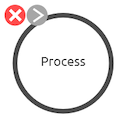
Data flows and trust boundaries
Data flows and trust boundaries can be added to the diagram by clicking their shape in the stencil on the left side of the diagram editor. Once added, their ends can be dragged around the diagram. To connect the end of a data flow to a process, data store or actor, you can drag one of its ends onto the element.
An easier way to draw data flows between elements is to select your first element, then click the grey link tool, next to the red remove tool near the top right of the selected element. This turns the link tool green. Then, when you click another element, a new data flow will be created, linking the first element to the second.
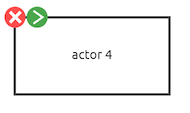
Extra vertices can be added by clicking at some point on the line. These new vertices can also be dragged to position the data flow or trust boundary. Vertices can be removed by clicking the remove tool that appears when you mouse near to the vertex.
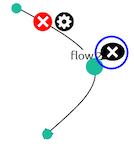
A data flow can be selected by clicking the Link options tool that appears when you mouse near to the link. Once selected you can edit its properties or add threats to it. Trust boundaries cannot be selected.
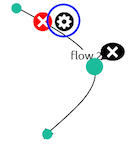
Data flows and trust boundaries can be deleted by clicking the red remove tool that appears when you mouse near to them.
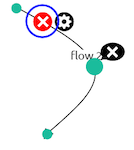
Out of scope elements
Processes, data stores, actors and data flows can be marked as out of scope. You can use this for elements that are needed to help a diagram make sense, but for which you are not interested in creating threats. To help reviewers (and as a reminder for future-you) you can specify a reason why elements have been marked out of scope. Threat generation is disabled for these elements. Out of scope elements are indicated in diagrams with dashed lines:
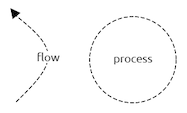
Elements with open threats
Processes, data stores, actors and data flows that have open (unmitigated) threats are highlighted in red so that you know where to focus your attention:
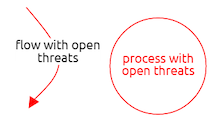
Editing toolbar
The toolbar on the diagram editing page supports some general diagramming features:
- Toggle gridlines on/off. When gridlines are on, elements snap to them for neater models
- Cancel the edit and return to the threat model details view
- Clear all the elements from the model
- Reload the diagram from the last save, discarding any changes
- Generate threats for the selected element using the threat generation rule engine
- Duplicate the selected element as a new element
- Save the threat model to your local browser storage
Element properties
To edit the properties of a model element, first select it. The element properties are shown on the right side of the diagram editor. In a future version of Threat Dragon, these properties will be used by the threat generation engine to suggest threats and mitigations for your model.